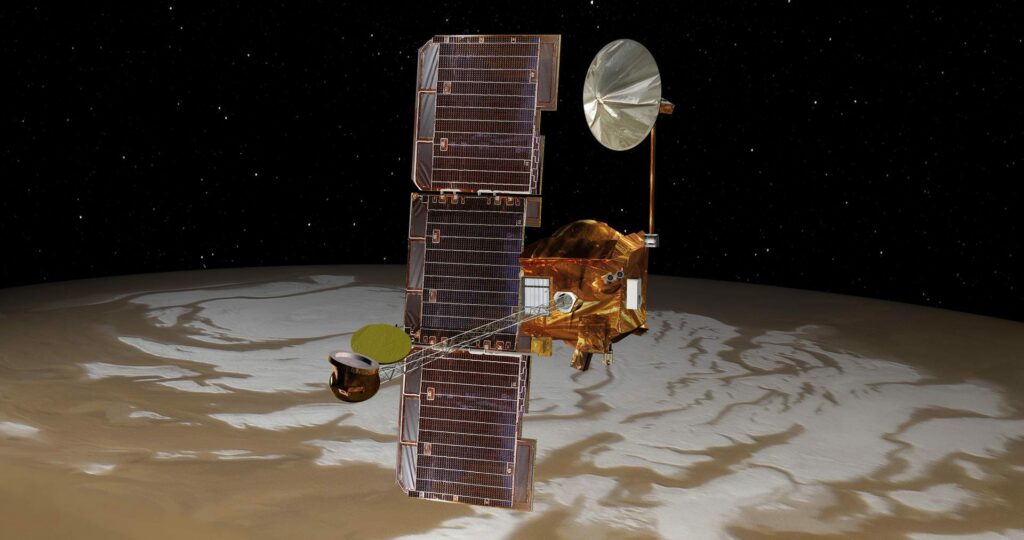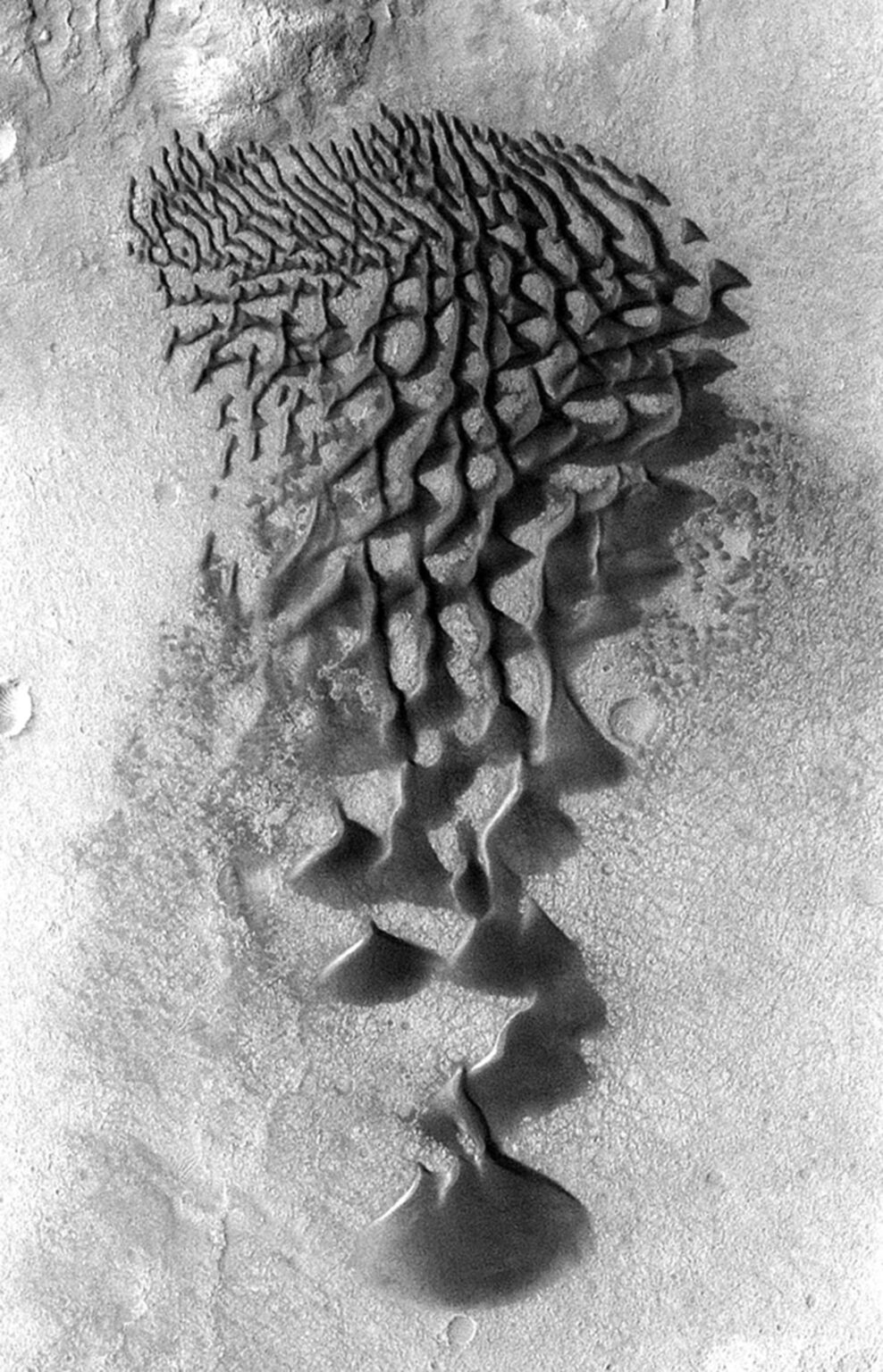Experts from NASA managed to carry out an audit of the fuel on board the Mars Odyssey. According to their calculations, the remaining reserve will be enough to continue the operation of the mission until the end of 2025.
Spacecraft–record holder
Mars Odyssey was launched in April 2001. In October of the same year, it entered a permanent orbit around the Red Planet.

The main purpose of the mission was to map the Martian surface. Over the years, the spacecraft has taken over a million images of the Red Planet in the visible and infrared ranges, making its global map. It managed to discover large reserves of water ice under the Martian surface, collected data on the radiation environment in the vicinity of the planet, studied seasonal changes in the polar caps and conducted a survey of Phobos.
Subsequently, the spacecraft also served as the main repeater for the Spirit and Opportunity rovers, transmitting about 85% of the information they collected to Earth. The Mars Odyssey data was also actively used to select landing sites for other missions, including Phoenix and Mars 2020. Even now, Mars Odyssey is still periodically used as a repeater.
“Missing” Mars Odyssey fuel
As it is easy to calculate, almost 22 years have passed since the launch of Mars Odyssey. To date, it holds records as the longest-lived Martian spacecraft, as well as as the longest-functioning artificial satellite of another celestial body. This is even more surprising if we remember that the nominal term of its work is only two years.

However, although the main Mars Odyssey systems continue to function normally, there is one factor that will not allow it to be operated indefinitely. It’s about fuel. It is necessary to perform periodic course corrections and hold the position of the spacecraft. When the fuel comes to an end, the Mars Odyssey mission will end with it.
At the time of launch, there was a supply of 225.3 kg of hydrazine on board the Mars Odyssey. Since engineers cannot weigh it in zero gravity, various indirect methods are used to estimate the remaining stock. One of them is the periodic heating of fuel tanks. The faster this process takes place, the less hydrazine is left in the tanks.
In the summer of 2021, NASA engineers concluded that Mars Odyssey had 5 kg of fuel left — less than the models predicted. By January, this figure had decreased to 2.8 kg. With so many, Mars Odyssey was supposed to stop working by the end of the year.
Investigation leads NASA
However, NASA engineers were confused by the fact that the remainder in the probe’s tanks did not match the estimate of the fuel spent during the mission. Therefore, they conducted a thorough analysis of telemetry, which excluded the possibility of leakage. Then they asked for help from outside experts to study the methodology used to assess fuel reserves for possible shortcomings.
During the subsequent investigation, it turned out that the mission’s specialists did not take into account the heat emitted by the heating elements of the fuel lines. Because of it, the tanks were heating up faster than they should. After making the appropriate changes, the engineers come to the conclusion that now the Mars Odyssey has about 4 kg of fuel left. This reserve should be enough for the mission until the end of 2025.
You can also read about how Mars Odyssey revealed the mystery of the disappeared Martian frost.
According to https://www.nasa.gov
Follow us on Twitter to get the most interesting space news in time
https://twitter.com/ust_magazine
